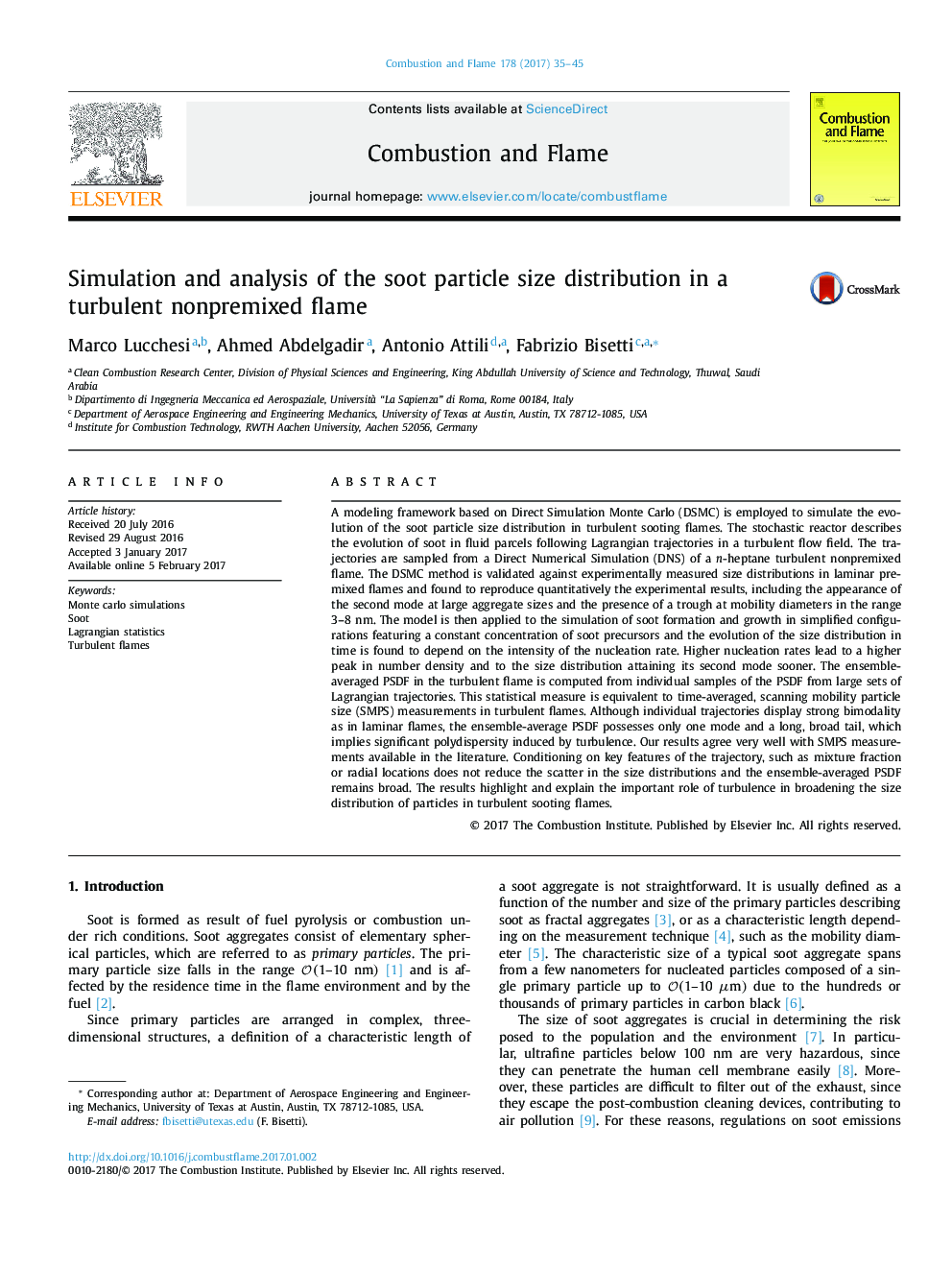| کد مقاله | کد نشریه | سال انتشار | مقاله انگلیسی | نسخه تمام متن |
|---|---|---|---|---|
| 6468565 | 1423559 | 2017 | 11 صفحه PDF | دانلود رایگان |
A modeling framework based on Direct Simulation Monte Carlo (DSMC) is employed to simulate the evolution of the soot particle size distribution in turbulent sooting flames. The stochastic reactor describes the evolution of soot in fluid parcels following Lagrangian trajectories in a turbulent flow field. The trajectories are sampled from a Direct Numerical Simulation (DNS) of a n-heptane turbulent nonpremixed flame. The DSMC method is validated against experimentally measured size distributions in laminar premixed flames and found to reproduce quantitatively the experimental results, including the appearance of the second mode at large aggregate sizes and the presence of a trough at mobility diameters in the range 3-8 nm. The model is then applied to the simulation of soot formation and growth in simplified configurations featuring a constant concentration of soot precursors and the evolution of the size distribution in time is found to depend on the intensity of the nucleation rate. Higher nucleation rates lead to a higher peak in number density and to the size distribution attaining its second mode sooner. The ensemble-averaged PSDF in the turbulent flame is computed from individual samples of the PSDF from large sets of Lagrangian trajectories. This statistical measure is equivalent to time-averaged, scanning mobility particle size (SMPS) measurements in turbulent flames. Although individual trajectories display strong bimodality as in laminar flames, the ensemble-average PSDF possesses only one mode and a long, broad tail, which implies significant polydispersity induced by turbulence. Our results agree very well with SMPS measurements available in the literature. Conditioning on key features of the trajectory, such as mixture fraction or radial locations does not reduce the scatter in the size distributions and the ensemble-averaged PSDF remains broad. The results highlight and explain the important role of turbulence in broadening the size distribution of particles in turbulent sooting flames.
Journal: Combustion and Flame - Volume 178, April 2017, Pages 35-45
